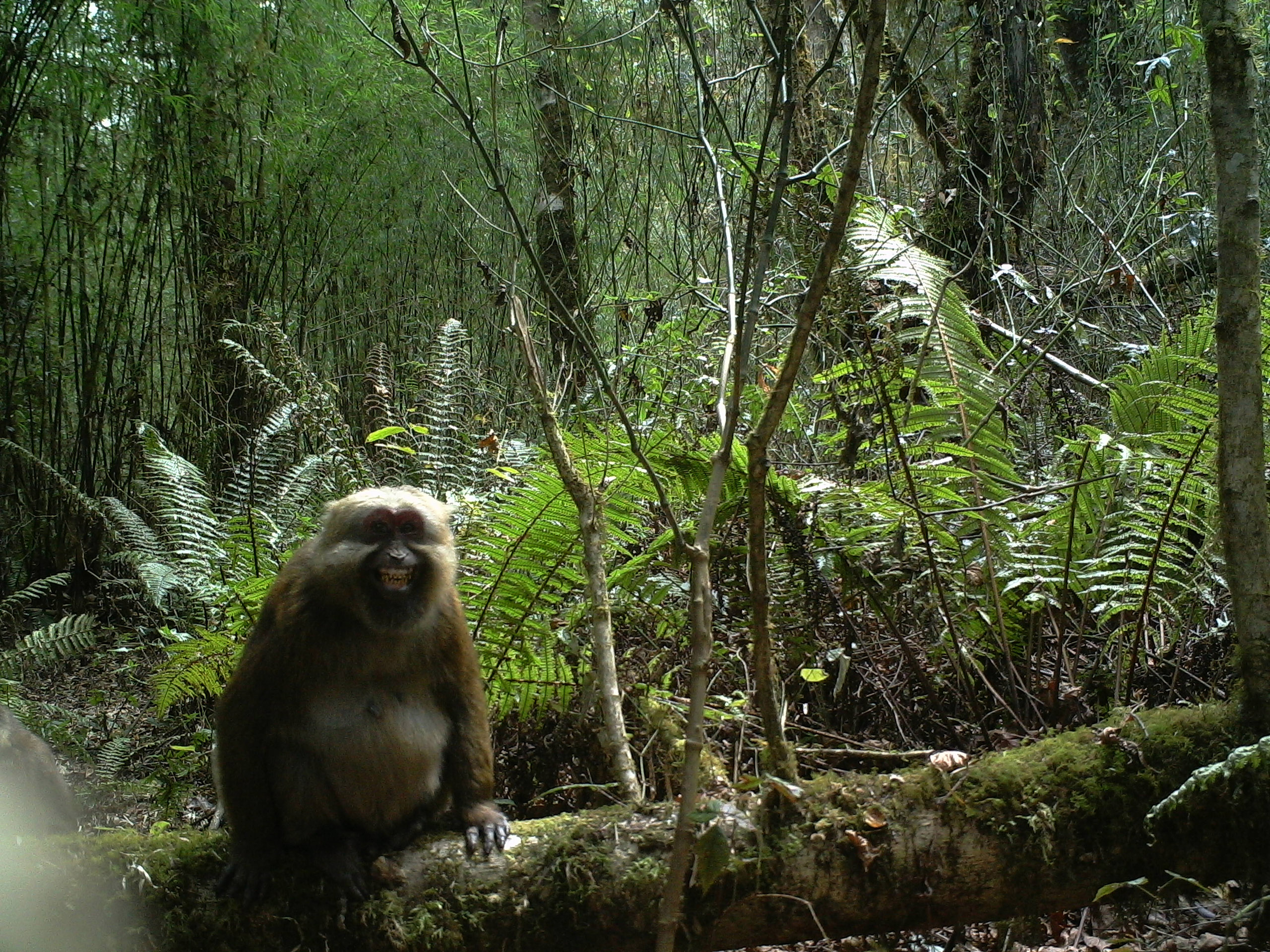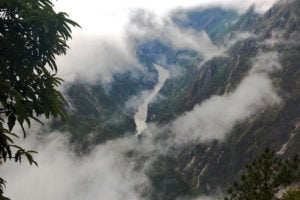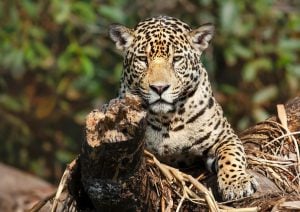The Yarlung Tsangpo Grand Canyon is a dream destination for many biologists and explorers, its forests a constant source of sightings of rare animals and species new to science. Now, Chinese scientists and conservationists are calling for it to be made a national park.
China’s national park system is under development. Ten trial parks have been set up over the past five years. These include the Northeast China Tiger and Leopard National Park in the far northeast of the country, the Giant Panda National Park in the southwest, and the Sanjiangyuan National Park on the Qinghai-Tibetan Plateau to the west.
This month, on 12 October, President Xi Jinping announced that five of the trials, including Sanjiangyuan, would be upgraded to formal national parks.
The government has previously said that by 2025 it will set up a national park-centred system of nature reserves, as well as creating new national parks, under China’s 14th Five Year Plan (FYP) for economic and social development.
But at the same time, hydropower development on the lower reaches of the Yarlung Tsangpo River – which flows on to become the Brahmaputra when it enters India – is again on the agenda, having been included in both the national 14th FYP and the FYP for Tibet. The proposed hydropower stations would be built in one of China’s most biodiverse regions. Little is known about their exact locations, but they could be near the Yarlung Tsangpo Grand Canyon in Mêdog county, where the potential hydropower resource is estimated to be 45GW.
Conservationists are concerned about loss of habitat to reservoirs behind any dams, and changes to the river’s flow which could also affect the Indian section of the river. Chinese Foreign Ministry spokesperson Hua Chunying told media late last year that “all projects will go through science-based planning and assessment giving full consideration to impact downstream.”
An irreplaceable canyon
Early this year, the National Forestry and Grassland Administration, which manages China’s national parks, solicited public opinion online on which areas should be included in the next batch of national park trials, but the Yarlung Tsangpo canyon got some of the fewest votes of all 66 options. Mêdog, where the majority of the 500-kilometre canyon is located, was for many years little-known to outsiders, being the last county in China to be connected to the road system in late 2013.
“For China, Mêdog is irreplaceable,” said Wang Fang, a researcher with Fudan University’s School of Life Sciences. Its isolation has protected it, Wang says, adding that “when there was no road, nobody thought anything would change. But now there’s a sense of urgency – the road makes major engineering projects more feasible, and we could lose things.”
In 2019, an infrared camera placed in Mêdog by researchers from the Chinese Academy of Sciences’ Kunming Institute of Zoology snapped images of a Bengal tiger on the prowl. Local people had occasionally reported seeing tracks they suspected belonged to these animals, but this was the first confirmation of their presence. The photos also confirmed that tigers, leopards, snow leopards and clouded leopards coexist in the area and maintain stable populations. This, Wang explains, is not seen anywhere else in the world.

The area is also home to Asia’s biggest concentration of ungulates (mammals with hooves). Li Cheng, founder of the Xizi Jiang Conservation Centre, has made multiple trips to the canyon. He and his colleagues have identified nine places in Asia where 10 or more ungulates can be found. The lower reaches of the Yarlung Tsangpo are home to 15 species (16 if the Bhutan takin is considered a separate species) – more than anywhere else in Asia.
Rare primates are also present. In 2013, during a survey of wildlife in Mêdog, Li took clear photographs of the white-cheeked macaque, a species which a couple of years later he and two other primatologists confirmed as a species new to science. Li recalls an arduous trek through jungle infested with leeches and ticks and climbing hazardous cliffs to reach the macaque habitat: “I saw and heard them clearly again, by the Meiyu Longba River in the village of Gutang. At the time, they were playing by the water and I was looking down from a nearby mountainside.”
Besides its biodiversity, the topography of Yarlung Tsangpo canyon is also spectacular. Considered by some to be the world’s deepest gorge, it starts at the village of Daduka at an altitude of 3,000m and runs east, winding around the Namcha Barwa mountain. The river then flows through Mêdog and south into India as the Brahmaputra. The canyon is 505km long and up to 6km deep, with an average depth of 2.3km. Its steep V-shaped sides funnel warm moist air from the Indian Ocean north to the plateau, creating a habitat suitable for a broad range of plants and animals.


At its lower end, the canyon is flanked by rainforest. Sky-tickling trees are covered with dazzling orchids and vines, while rufous-necked hornbills swoop in the canopy. On the ground, tropical plants grow, some of their leaves the size of umbrellas. But heading in the opposite direction, to the north, the appearance of the canyon changes until, at an altitude of about 5,000m, there is only snow and ice.
Researchers have found that despite only 40km separating the waters of the Yarlung Tsangpo in southern Mêdog and the peak of Namcha Barwa, the range of altitude spanning 7.28km means all kinds of vegetation can exist in the area: from tropical monsoon forest to evergreen broadleaf forest, to mixed conifer-and-broadleaf forests, wholly coniferous forests and alpine scrub.
I just became lost in the enjoyment of making new findings, it was like the Age of DiscoveryLi Cheng, founder of the Xizi Jiang Conservation Centre
The Yarlung Tsangpo canyon and its surroundings are homes to China’s largest expanse of primary forest. The rivers and deep gorges here house isolated populations of plants and animals that have evolved into new species and subspecies – many of which are as yet unknown to science. Li Cheng says it is always possible to find a previously unknown species there, or sometimes a species that was once identified, but then lost. “On my first trip there I just became lost in the enjoyment of making new findings,” he says. “It was like the Age of Discovery.”
Three nature reserves already exist in the area – Kongpo, Cibagou and the Yarlung Tsangpo Grand Canyon – but these are unconnected.
One of those calling for a new, contiguous national park is Lü Zhi, a professor at Peking University’s School of Life Sciences, who suggests the new park should combine the three reserves and small nearby wetland parks. This would have a total area of about 40,000km2 (adding more than 10,000km2 to the existing protected areas).
“Protection of flagship species such as the Bengal tiger, clouded leopard, rufous-necked hornbill and Tibetan cypress will spur overall protection of biodiversity in the region,” said Lü. The Tibetan cypress, a coniferous tree, is unique to Tibet and is found along the lower reaches of the river. The majority of individual trees are over a century old, with some over a thousand years old. The canyon lies between China and India, and downstream India is home to a stable population of Bengal tigers. Designating a conservation buffer zone between the two countries would help cross-border conservation.
Wang Fang has carried out studies in all three existing reserves in the area. He says they are huge compared to those in eastern China, but have few ranger stations. Conservation efforts are limited to fire prevention and very occasional action against poachers. Nor are relations with local communities very close.
Inviting local people into conservation efforts
In the Sanjiangyuan National Park, also on the Qinghai-Tibetan Plateau, every household chooses one member to act as park ranger who is paid to participate in biodiversity monitoring, conservation and tourism. In the Valley of the Cats, an area of the park known for its population of snow leopards, communities hold discussions on what nature experiences will be offered to visitors and how income will be distributed. They host visitors in their own tents and take them out to look for snow leopards.
In Sanjiangyuan National Park, one member of every household is designated as a park ranger
Several of the experts proposing a Yarlung Tsangpo Grand Canyon national park say the Valley of the Cats model could be copied in the proposed park. The area is home to Tibetan, Mona, Lobe and Deng minorities. The highway to Mêdog has brought increasing numbers of tourists, which could benefit communities, but too many visitors could be a threat to the environment and therefore the local people who rely on it. Tourism needs to be carefully managed. In the past, many nature reserves asked villagers to move out and forced them to find other livelihoods. The new national park system seeks to find ways for nature and indigenous people to live in harmony. For example, in Sanjiangyuan, herders still live in a traditional way but the government offers them subsidies to reduce the number of yaks they keep and so avoid overgrazing of the habitat.
“Under the current system, local people aren’t involved in monitoring and conservation in the reserve. But when scientists visit, they still need local guides – nobody else knows the reserves as well or can climb those mountains year-round. The national park will need to get local people involved,” said Wang Fang. Attractions at the Yarlung Tsangpo canyon include mountaineering, rafting, birdwatching and local cultural activities. Wang adds that the government has already invested significant amounts in poverty alleviation, and national park tourism could further boost incomes and strengthen links between local people and the park.
President Xi visited Tibet in July. According to a report in the People’s Daily, he was updated on environmental protection along the river and said water resources should be both used and conserved – but with conservation having priority.
This week China is hosting an online component of the Convention on Biological Diversity’s 15th Conference of the Parties, with an in-person meeting to follow in 2022. Lü thinks the best way to balance development and conservation of the Yarlung Tsangpo remains an open question and must be approached cautiously. In Nature damsmagazine, Lü and five other academics have written that establishing a new national park at Yarlung Tsangpo would demonstrate China’s commitments to the goals of the convention.









